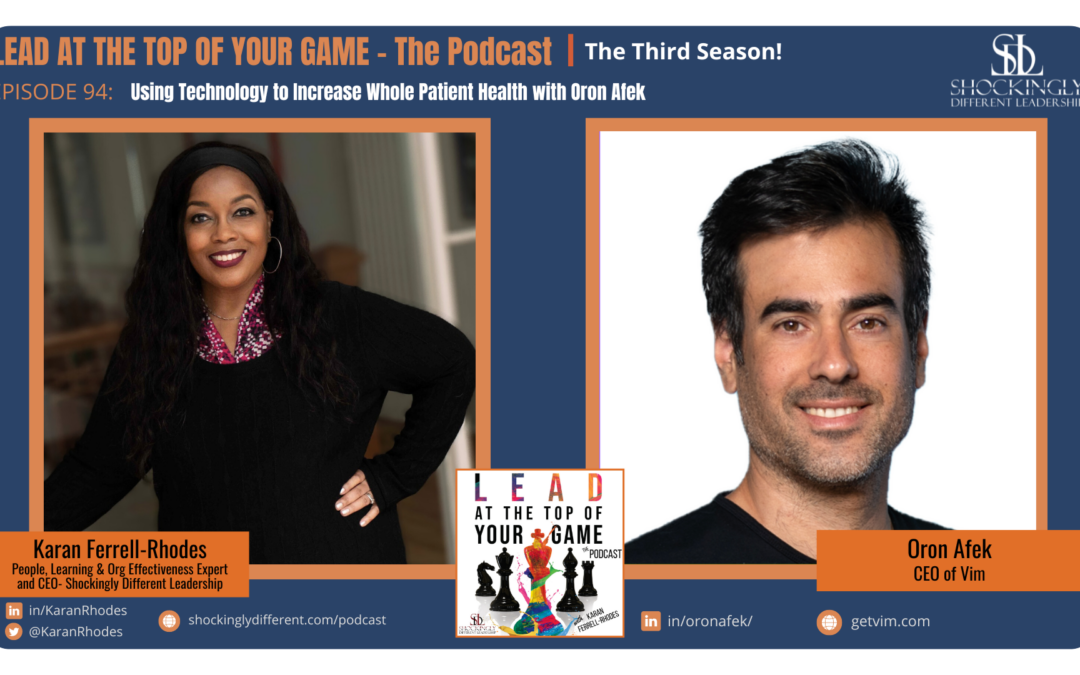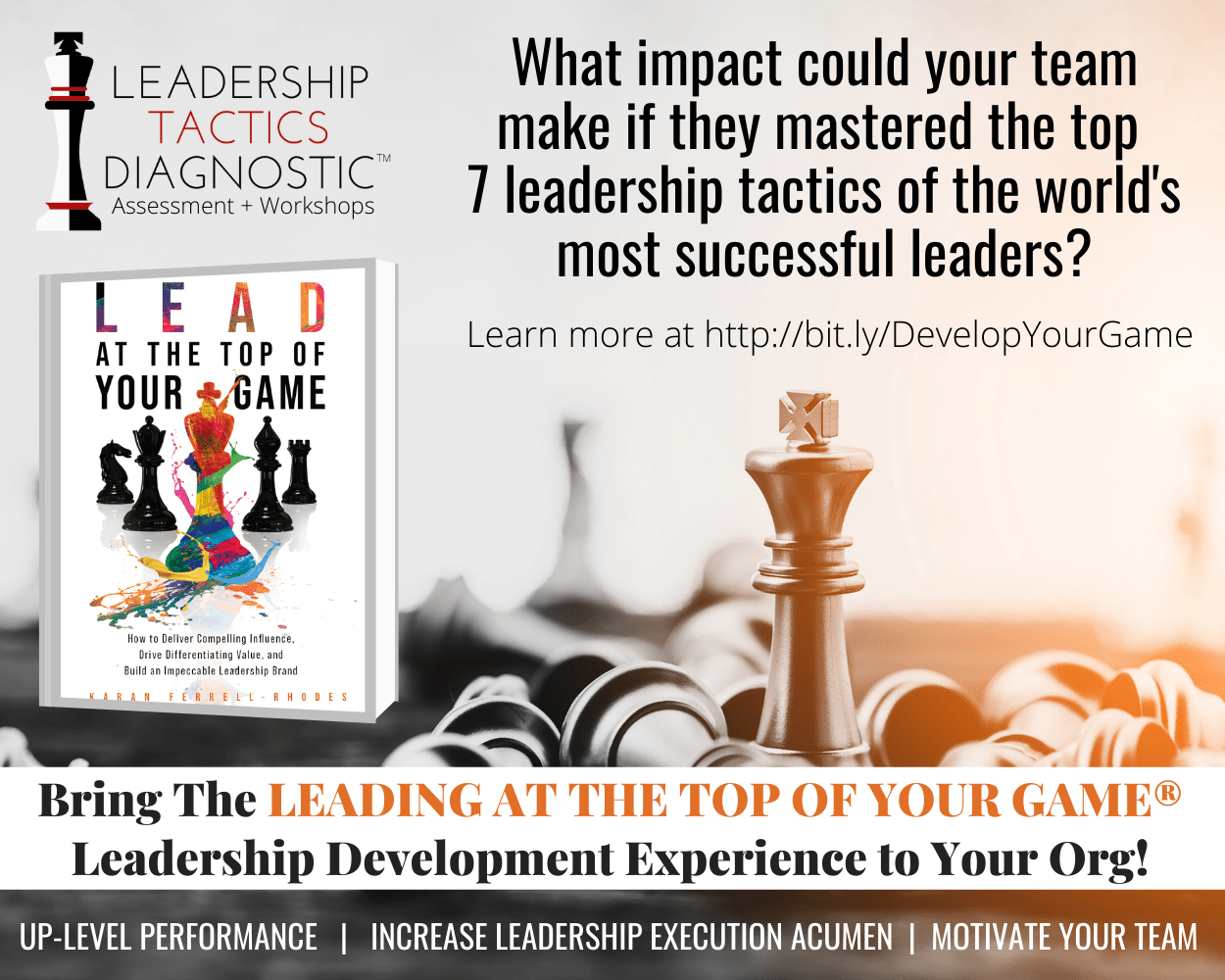IN THIS EPISODE, KARAN FERRELL-RHODES INTERVIEWS ORON AFEK.
Vim, a cloud-based middleware platform for healthcare, is revolutionizing healthcare by using technology to simplify complex integrations between payers and providers, making seamless clinical workflows a reality. By focusing on the whole patient’s health, Vim reduces barriers, allowing innovators to enhance care delivery.
Oron Afek is the Chief Executive Officer and visionary leader of Vim, whose dynamic leadership drives bold innovation and strategic focus. He is committed to revolutionizing healthcare by reducing complexity for providers in value-based care. Oron has also founded and developed four companies across various industries: telecommunications, gaming, real estate, and education.
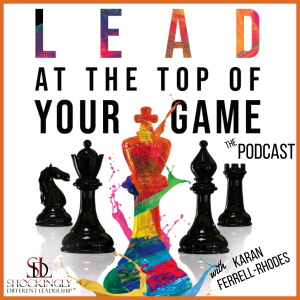
Posted by
SDL Media Team
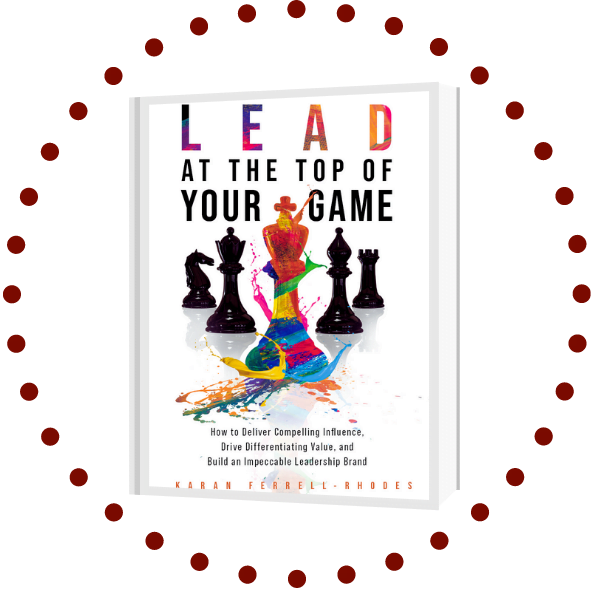
Rather view our video podcast?

WHAT TO LISTEN FOR:
- What challenges do healthcare innovators face when integrating with large payers and physicians?
- How does Vim function as a middleware solution in healthcare?
- What were the initial challenges Vim faced in gaining multi-payer adoption?
- What misconceptions about healthcare are addressed regarding fee-for-service and fee-for-value models?
- What is the importance of courageous agility in leadership?
“If you choose to go to the most expensive [healthcare facility], it doesn’t mean that the care is better.”
FEATURED TIMESTAMPS:
[03:03] Oron’s Life Outside of Work
[05:10] Oron’s Role at Vim
[07:34] Vim’s Impact on Healthcare
[12:31] Signature Segment: Oron’s entry into the LATTOYG Playbook: Challenges in Launching Vim
[18:39] Misconceptions in Healthcare
[21:00] Employer-Based Healthcare and the Future of Healthcare
[30:18] Signature Segment: Oron’s LATTOYG Tactic of Choice: Leading with Courageous Agility
[33:18] Learn More about Vim
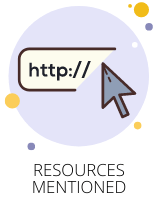
ABOUT ORON AFEK:
Oron is both the Chief Executive Officer of Vim and the company’s visionary. Oron’s dynamic leadership shapes Vim’s corporate strategy, defined by bold innovation balanced with strategic focus. Oron pushes boundaries and helps the company innovate where no one else can. He ensures that the company – and all its partners – are aligned on a shared purpose to revolutionize healthcare and lower the complexity for providers to participate in value-based care.
Before his remarkable journey in healthcare, Oron honed his skills serving in a special forces unit of the Israel Defense Forces, embodying a spirit of determination and fearlessness. Drawing from his diverse background, he founded and spearheaded the business development for four groundbreaking companies across telecommunications, gaming, real estate, and education.
LINKS FOR ORON:
- Website: getvim.com/
- LinkedIn: linkedin.com/in/oronafek/
ADDITIONAL RESOURCES FOR YOU:
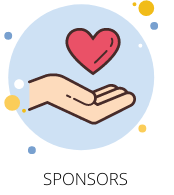

Episode Sponsor
This podcast episode is sponsored by Shockingly Different Leadership (SDL), the leader in on-demand People, Talent Development & Organizational Effectiveness professional services that up-level leader capability and optimize workforces to do their best work.
SDL is the go-to firm companies trust when needing to:
- supplement their in-house HR teams with contract or interim HR experts
- implement leadership development programs that demonstrate an immediate ROI and impact on the business

Click the plus button on the tab to access the written transcript:
Episode 94 | Using Technology to Increase Whole Patient Health with Oron Afek
Oron Afec 00:00
The healthcare industry is really complex, and it’s huge, and it’s growing, and the underlying asset in healthcare is patients and the most important thing in their life, which is, you know, their loved one care and their own care and how healthy they are. But we have, especially here in the United States, we built this gigantic, you know, healthcare system that in. Some places is given a cost and the scale and the perverse incentives and how it was structured is very difficult to do business with
Voiceover 00:04
Welcome to the “Lead at the Top of Your Game” podcast, where we equip you to more effectively lead your seat at any employer, business, or industry in which you choose to play. Each week, we help you sharpen your leadership acumen by cracking open the playbooks of dynamic leaders who are doing big things in their professional endeavors. And now, your host, leadership tactics, and organizational development expert, Karan Ferrell-Rhodes.
Karan Rhodes 00:37
Welcome back to the podcast, and thanks for joining another episode designed to help you better lead at the top of your game. As you know, for season three each month, we’re featuring leaders who have fascinating roles in a particular profession or industry. And today’s episode is part of our special series featuring leaders in the healthcare industry. And now enjoy the show. Hello, my superstars. This is Karen, and welcome to another episode of the lead at the top of your game podcast. We have a tremendous guest today who, as you know, is part of our special series on leaders and executives in the healthcare arena, and we’re very honored to have on today’s show, Oren Afec, who is the chief executive officer of a company called VIM, and VIM is a leading healthcare tech platform that connects data insights and applications to help suppliers at scale, and these are suppliers within the healthcare arena. At its core, VIM is working to change the future of healthcare by impacting how care is delivered. And I’m going to let him peel back the layers of the onion to help you learn more about that, because I didn’t want to murder it. But what they’re doing is absolutely fascinating and is really helping us all. So welcome to the podcast, Oron!
Oron Afec 01:59
Hi, Karan, thanks for having me.
Karan Rhodes 02:01
Oh, we’re so honored to have you, and I can’t wait to go deeper into what you do and how your your perspective on leadership and what VIM is doing, and fantastic customers that they serve. But before we go there, we always love to learn just a tad about our guests. So for just as much as you feel comfortable, would you mind giving us just a sneak peek into your life outside of work? .
Oron Afec 02:28
Absolutely. Oh, I grew up in Israel, came here to the US. I live in New York now. Came here 10 years ago, married to NAMA father to Adam. He’s two and a half years old. Now, you know, been loving endurance sports up until Adam’s birth, and today, you know, doing this less professionally, but still enjoying it, running, cycling, swimming, better run with the Israeli Special Forces. Yeah, and love to travel, enjoying life whenever I can
Karan Rhodes 02:54
That’s amazing. And you were you so kind of sure that you do a lot of traveling, uh, globally and back and forth to the Middle East as well. So I’m just curious, is it tough to balance being the CEO of such a active and scaling firm, while also, you know, kind of monitoring the events of the world?
Oron Afec 03:15
Think, um, at the beginning, when you start doing that and living in different time zones and trying to adjust to different cultures. And I think that doesn’t use a lot of cognitive friction that, you know, ends up being pretty exhausting. But, uh, thing over the years, found that the kind of stride that makes it more of an advantage so I could get pretty effective, even if I travel for a 72 hours trip across the ocean. Now, I kind of got my setup in place. I don’t need to deal with the overhand, and I can get pretty effective in and out. And so found it pretty effective in recent years to just go for short trips either way. You know, we do live in New York. Now that’s kind of the home base. Those short stints back to Israel being proven to be pretty effective. And especially, we have a big chunk of our team over there, especially engineers, data product, it’s all located over there. So it’s good to be in person. My co founder, Asaf is located there. Is our CTO and our president. So spending more time in person is always a good thing.
Karan Rhodes 04:18
Always a good thing. Absolutely. Well, I know I didn’t near do it justice. So can we now have you explain a little bit more about them and the difference that you are making for your clients, tell us more about what you all are doing over there.
Oron Afec 04:35
Absolutely, the healthcare industry is really complex, and it’s huge, and it’s growing, and the underlying asset in healthcare is patients and the most important thing in their life, which is, you know, their loved one care and their own care and how healthy they are. But we have, especially here in the United States, we built this gigantic, you know, healthcare system that in. Some places is given a cost and the scale and the perverse incentives and how it was structured is very difficult to do business with, and there are 1000s of innovators, developers, companies that try to disrupt the system that you know they struggle with the fundamentals of even integrating into the ecosystem, not to mention, you know, making their own clinical innovation work better, right? So our mission is to really accelerate innovation in healthcare and enabling 1000s of developers to be more seamless and seamlessly integrating with the ecosystem and being more successful impacting the ecosystem. So we try to take out of the equation the things that are repeatedly a hurdle for all those vendors, such as, how do I work with the large payers more seamlessly big entities that pay claims that capture premiums that then act as the insurance company for majority of the lives in United States and at the same time. How do I work more seamlessly with physicians? How do I integrate with their clinical workflows? How do I make sure that my technology can surface for the right patient at the right time, for the right clinician, and have the right data attached to it. So think about vim as a developer platform, as a middleware solution that is connecting those different nodes in healthcare to allow those other companies to do business more seamlessly, and by doing that, accelerating innovation, getting it at lower cost to the market and much better speed, with overall the intention of making healthcare work better, more cost effective here in America.
Karan Rhodes 06:44
So I can only imagine coming myself. My corporate work was in tech, and I can only imagine the complexity involved in doing that, and I know you all have a platform for that. So my first question is, who are your target customers?
Oron Afec 06:59
Yeah, eventually in healthcare, you have a lot of different constituents who interact with each other. On one end, you have physicians. Or providers, depends on how you look at it, you have insurance companies. You have other type of risk bearing entities that would assume insurance risk and try to distribute it across a number of different clinical nodes or physicians. You have different type of physicians that need to interact and collaborate. You have primary care, you have specialists, you have labs, you have other other parts of the ecosystem. And then you have many different point solution, technology companies, people who develop their own networks of, let’s say, behavioral specialists. They have in home testing, or they have a patient home visits for patient care, or they have a call center to support chronicle chronic conditions and all those different players need to have an easy way to interact and make sure that they all align across the same source of truth, of who is that patient, what Do they have, and how do I surface those insights at the right time, at the right place, right? So our customer could be anyone who need access to the data in the workflow, right? It could be, again, someone who thinks about, okay, how do I dispatch a car ride for a patient covered by a payer X and making it available for physician y to prescribe it and offer it to their patient when she’s trying to get them into the clinic. Or how do I allow that server that ships a pharmacy order to the patient home to be more prevalent at a provider workflow and allow the provider to know that she can prescribe using that service, because that thing is being reimbursed by payer A, B and C for patient X, Y and Z, a lot of those. You know, health care is really complex in a way that it’s being paid for and being integrated. So we’re just trying to simplify all that and make it very seamless. And the thing, the thing we believe we need to get really right, is one we want to be seamless inside the provider workflow. That’s thing for us to get really right, and where we invested a lot of our, you know, the last nine half years and efforts and technology to be seamlessly integrated to the clinical workflow. At the same time, we need to be connected to the payer, because the payers are eventually one foot in the bills for the way healthcare is being paid for, to providers. And then the last…
Karan Rhodes 09:33
Are you all like a triage, like working with the multiple suppliers and providers and connecting them in the way that’s seamless,
Oron Afec 09:42
I would say, each other. I think that’s a really good way to describe it. Best way to think about Vim, you know, gonna use couple analogies if you think about stripe in E commerce, AWS and cloud computing. You know, 20 years ago, you if you wanted to build your own e commerce Store, you had to figure. Building your own data center, you know, dealing with credit card chargebacks. You know, dealing being PCI compliant. And today, those things have been solved, right? So you could just use AWS build your website very easily. Don’t need to build anything special. And then you can use stripe for credit card Shopify to open your store. And you have all this infrastructure that allow you to really focus on, you know, what you’re really good at, right? That never really happened in healthcare, and we’re trying to make this more of a reality. So again, people can consume more of their attention and focus on, you know, the way they engage patients, the way they offer their service to a provider the way that they’re getting something paid based on value versus based on time and material, which is part of the problems in our healthcare system. So again, like, that’s kind of where our focus has been. And, you know, we’ve been growing in the space in the last few years, you know, servicing most of the national payers now covering over one 20 million Americans, and at the same time getting to a reach of now close to 40,000 providers, physicians.
Karan Rhodes 11:08
Now, is this mostly US based, or is this a global platform?
Oron Afec 11:13
Currently, it’s exclusively US based.
Karan Rhodes 11:15
US based. Okay, gotcha fascinating. This is absolutely fascinating. I’m curious about how hard it was when you first worked and launched the platform to get all the players to buy in, because it depends upon a lot of different entities to be willing to be part of your platform. If I’m thinking about this correctly, how hard was it to launch and convince them that this was needed? I mean, I guess anyone knows is needed, because healthcare is very, very complex, as we all know. But were there hesitations or pushback from your different stakeholders?
Oron Afec 11:56
This is such a thoughtful question, and one that we struggled and grappled with for so many years. Yeah, so we had to be really kind of focused on building one thing at a time before we could have our own entire ecosystem. As you described the the first hurdle was, you know, eventually it all stems from the provider network. If you if you have something physicians want to use, in our view, then you crack the code of how to build the infrastructure that then every payer would connect to and every developer would like to build on. How do you get the providers interested? The way we approach that was to go to New payers first. And I don’t think I ever talked about it outside of Vim, but we initially explored working with payers and try to work with them as an inaugurated fashion. I think payers initially saw this as a threat in a way that, well, we actually want to differentiate by giving your data and by you surfacing it inside the provider workflow. You know, we want to differentiate and offer better service to physicians and patients and be able to grow our own business. The reality here, you know, unlike Canadian or the UK or the Israeli markets, where there’s a single payer, here in America, we have hundreds of different payers. Yeah, so it was really difficult to drive and get Provider Adoption and interest, if you could only offer the value to a small sliver of their patients, right? So we had to get multi payer adoption before we could compel the providers to join the platform the way we did it eventually, without getting into too much detail, it took years to do, but it was to find the people, not the organizations, to find the right people in those organizations that could see beyond the self serving interest of competitive dynamic and realize that unless you collaborate together, you’re not going to get any provider adoption. So there is no way you could benefit from this way of collaborating with providers in a way that is siloed from other peers or competitors. You have to collaborate. It’s a little bit of the story of our world. It’s really tough today not to have a global economy. We have to collaborate. It’s part of the secret sauce, and it also leads to a lot of issues. But once we’ve been able to identify those people that saw the vision beyond the, you know, again, the short term self serving interest. And, you know, I still keep in very close touch with those people, till today, yeah, we’ve been able to really get that, I would say, critical mass that was compelling to providers. The next hurdle was on the physician side. Okay, now that you guys have all this data and it does seem applicable across many of our patients, now you need to connect with my system of record, not only the EHR. Electronic Health Record system. And that was really tough, not tough because the EHRs didn’t want to be part of that. I think the difficult part was that every EHR works in a different way. They have different APIs, a pretty bifurcated ecosystem that is not always hitting, you know, meeting the same standards of connectivity. So we had to build technology that that makes it very easy to integrate into the clinic workflow and making it five minutes versus five months. And so if you’re a physician, you really, you know, catering for, you know, maybe a couple of 1000 patients. If you’re a primary care physician United States, that’s the average you’re very busy preparing for appointments, following up with people who you know that you need to follow up with and you care about, and everyone needs to feel special, and you know that’s your whole world. And for you to entertain doing a big IT project, especially if you’re in a small practice, that’s usually a no out of the gate. You know, the big hospital systems, they have IT teams. It’s a different story. But our passion was always to start with the smaller medical groups, the independents, the people that really running those small businesses. And we’re still doing this today. We do work with larger organizations, but only we build our initial uh business with the smaller practices, which we’re very passionate about, so we had to…go ahead.
Karan Rhodes 16:28
Isn’t um, epic one of the record systems for your bigger players, and if, and also, what are the smaller ones, it seems like it’d be tougher to get the smaller companies to buy in.
Oron Afec 16:41
Yeah, yeah. And I think, this is where technology comes handy. We by which technology allow you to integrate today into, let’s say, a clinical workflow or the end point where the clinical user is leveraging that EHR technology does allow you to do a lot of things today that is essentially doesn’t require a heavy lift on the system of record, and sometimes there’s no lift at all. So we build a way where we can literally go live in the course of a quick zoom call. And you know, we build this during covid. So that was an important thing to do. We should. The goal was we should be able to go live virtually in the course of a quick zoom call, and that’s how the technology was designed. So again, even if it’s a small system, we can still support it. Even if it was built back in the 90s and it’s desktop based and it’s running on all their operating systems, we can still support it, and I think that’s kind of part of the magic and what we build, and something we take very big
Karan Rhodes 17:47
Fascinating! And I’m just curious, because this isn’t a space that is probably deeply known by the everyday individual like me. What are some misconceptions about the space or things that people don’t know what they probably should?
Oron Afec 18:04
Yeah, absolutely. And eventually, everything we do does touch the end patient. There is a massive shift today in the United States from fee for service to fee for value. Let me explain what I mean by that. Predominantly the way that payers and physicians interact today is through the fee for service rails, which essentially say, if a patient comes in, if they’re sick, if they have an issue, you treat them, I pay you for that treatment that does not incentivize long term patient health and caring for patient health for the long haul. And there’s a bunch of reasons that why this has not taken off. And it’s not just connectivity. There’s many more other business reasons why that haven’t taken off, and we can talk about time, but there is an attempt that is a lot of pretty amazing tailwinds coming from the government in the form of Medicare Advantage and Medicaid in the federal side and the local state side. There’s a lot of great tailwinds coming from big, large employers and innovative payers that they want to shift the paradigm from fee for service to fee for value, essentially, way to pay providers for value being created versus for just care being rendered. And that’s something that eventually, you know, we are enabling to do more seamlessly, and why every patient should be really, you know, again, interested in how that can help whole patient health, because eventually you do want your providers to have the right incentive, the right technology, the right data to think about you, not just about the current condition, but What’s going to happen 10 years from now, 20 years now, 20 years from now? And that’s really, really important. There are a lot of different misconceptions, kind of going back to your question specifically, and thinking about, you know, what patients some of the things that patients think about, but they don’t necessarily true, right? Quality of care is not. Was associated with the brand of a certain health system, right? If the fact that a certain health system is associated with a big Academic Center, or it has a name that look, look really good, because you know that also is associated with a big school or no university, or a nice
Karan Rhodes 20:20
That’s Emory, Emory, right in Atlanta, Emory healthcare?
Oron Afec 20:23
And yeah, the health systems in America, some of them in certain areas, like special cancers and different high end conditions, are by far the best in the world, right? So if someone, God forbid, get really sick, they could really benefit from being cared here in the United States more than anywhere else in the world. But for the most part, 90% of the care that being rendered does not require necessarily the best of the best of the best. It requires the basic stuff being done right repeatedly at a high volume good, experienced physicians. That’s true, that’s all. And so the way that people associate, maybe quality, with brands, has been something that been, you know, is a huge driver of cost into the system. Because, obviously, the more power large organizations have because of their brand, the more people gonna go there, the more leverage they have with insurance companies, the more they gonna jack up the price and be able to mandate more for doing the same thing, like another place that is maybe a smaller practice. Over time, these compounds and compounds and compounds independent providers being gobbled by larger systems, which leads to even more of an accelerated flywheel of increasing cost. Now you and I don’t see this on a day to day basis, because majority of the payment is going to be if we need, if we need care, it’s going to be paid by the insurance company. But if you think about a year compounding effect, you and I, on average, are both paying extra seven to 8% every year, additional money on top of the premium we paid last year. So there’s a seven year 7% year over year increase of what we pay. And that, that thing compounds tremendously. If you think about 20 years ago and how much you paid for healthcare over time, which you’re paying today. Yeah, right, your difference. And when 300 plus million Americans do that every year, the ecosystem now being over 20% of the GDP of the United States, it just blowing out of proportions, right? So eventually it makes healthcare less affordable and less accessible for people. It doesn’t make it better. So that’s the first thing people don’t understand, and I think it’s important to say, when you choose to go to the expensive place, it doesn’t mean you go to the better place. Yeah. Second thing is, technology in healthcare doesn’t make providers more effective, and it’d be more efficient. It’s technology helped people in any other industry, self included, to be much more effective and reach more people and be much more again, scaled and be able to build the businesses in much more skilled way than before. In healthcare, it may be the one profession where there’s almost like a cost disease. The cost is increasing. Yeah. In technology without the productivity increasing in the productivity decreasing at the same time. And so people sometimes appreciate a technology in healthcare has introduced more pain than Yeah, I can think about another, you know, huge list of things that you know, but yeah, well, now
Karan Rhodes 23:41
Well, no, this is fantastic insights, and I can, I can absolutely see that, see that, if you sit down and think about our healthcare system in the US,
Oron Afec 23:52
Can I say one more thing? Karen,
Karan Rhodes 23:54
Oh, please, please. Please.
Oron Afec 23:55
I think the third thing, and maybe I’ll end with it, is employer based health care is bad for America and bad for Americans.
Karan Rhodes 24:05
Really say more about that.
Oron Afec 24:07
So back in the day where the employers were not able to increase their the paycheck, the salaries and differentiate through paying more to employees, given some limitation during the recession, health care benefits become a differentiator. So employers started to offer healthcare benefits. Over time, the employers in the healthcare benefits business drove a lot of the things that today manifest as perverse incentives. Let me. Let me explain the time that the average person holds their job today with an employer two to three years, likely more aligned with the two year time horizon, which
Karan Rhodes 24:47
2.7. I had a researcher that came and told me a couple months ago, 2.7
Oron Afec 24:52
Thank you. So 2.7 years, which means that as the employer, the one footing the bill for the patient, health. So thinking about a 2.7 year time horizon for the employee, there is lack of incentive on the employer side to think about long term employee health care, right? So that short span of think about it as retention of an employer to their employee is also driving perverse incentives of thinking about whole patient care and a 10 to 20 year outcome. And if you think about like the (unintelligeable) in healthcare, the cardiovascular conditions, cancer conditions, diabetes, like the thing that truly drive the cost in healthcare, the time for those conditions to develop is not in a span of a 2.7 years. It’s something that happens over many years. And so I think that
Karan Rhodes 25:43
And whatwould you suggest, if it’s not employer funded?
Oron Afec 25:46
I do think that employers, you know, I’m not a big fan of a single payer system. I think single payer system would drive other issues, which we might want to chat some other time. And what the you know, as an Israeli or I could see that the problems we have in Israel with a single payer system, I can see the same problems in Canada. We see the same problems in in the UK, but I do believe that employers should be more actively participating in giving their employee a stipend certain amount every month, and say, go buy your healthcare. You know, since the Obama administration, we have the exchanges, marketplaces where you can go and purchase your healthcare. There’s, you know, some tailwind regulation they call ICWA that allow employers and encourage employers to move more of their employees to that type of format, where here’s a stipend go and buy your healthcare. It’s yours to deal with. And you know, we can give you the money, we still pay for the benefits, but now you’re being part of something that can take care of you for as long as you live in Atlanta or as long as New York, and that time span is longer than 2.7 years, right?
Karan Rhodes 26:53
Yes, yeah, usually.
Oron Afec 26:55
you live in Atlanta for 20 years. I mean employers, but I still live there for 20 years, and so I want a local care provider incentives to take care of me for the long haul, and other other things need to be resolved in order for this to be fully aligned. But I feel like this could create a good balance between employees employer sponsored health care and allow employers to differentiate by the contribution they give their employees every month. But at the same time, employees are not bound to a single employer for the whole course of their lifetime, so there don’t perverse incentives in how you care if patients health.
Karan Rhodes 27:31
Oh my gosh, Oron. That’s so insightful. We need to get you on a task force somewhere. To help max the strategy out for the US, because it is a mess right now, if I do say so myself,
Oron Afec 27:44
very smart people in the White House thinking about that. Yeah,
Karan Rhodes 27:48
oh yeah. I know there’s a lot of people there, thought groups, global think tanks, I know around healthcare. There’s quite a few North America based as well. So anyway, I was teasing, but yeah, it does need to be innovated in a very smart way. It’s just Karan and Karan’s opinion. But hopefully we’ll make some progress.
Oron Afec 28:09
I think, I think we’re making amazing progress on the over 65 and also the Medicaid areas, I think were the one area to be still, you know, kind of more more disrupted, and influences the employer side that you know, people like you and I, the commercially covered patients like that’s an area where there’s more innovation needs to come into the payment model. But you know, one day,
Karan Rhodes 28:34
Well, hopefully we’ll get there one day, baby steps, right? Well, I know we’re wrapping up on time, but I can’t let you get out of here Oren without you answering our signature question for our podcast, for my newer listeners out there. You may not know, but my firm, Shockley different leadership conducted some major research on key critical success factors of high performing leaders, and we always ask our guests, like Oren, which of the seven really pop for them? All seven are equally as important. You use them at different times, but there’s usually one that kind of resonates with you. And so Oren, you were so kind to share in our pre talk that leading with courageous agility really resonated with you. And for my new listeners out there, leading with courageous agility is all about having the courage and the fortitude to go ahead and take calculated risks and you know, and stand up for what you believe in, but still take baby steps forward, even if the future is uncertain or unclear. So curious minds would love to know. Oren, why did courageous agility really pop for you?
Oron Afec 29:43
Yeah, thank you. I think going back to when I was 18, joining the military, one of the key things I think Special Forces put emphasis on is how to get you comfortable being uncomfortable and asking for it and wanting it, and truly. Not, not as a lip service, truly being comfortable with those situation to the point where you would like to get into uncomfortable situations, because it’s something that keeps you jazzed and keeps you excited and keeps you moving in the right direction. And I think after doing that in the military and doing that in early entrepreneurial career kind of milestones, you then understand that this is the only thing that you know maybe you can bring to the table. You know, I’m not an engineer, so, you know, I can’t even claim that I’m smart enough to build software and think about scale. And I’m not the best marketer, the best salesperson. But I think what I over the years, figured is that I’m pretty comfortable being uncomfortable, and that’s something I’d love to help our teams to do, and something I’m trying to focus on when I when I think about working with our different managers and leaders at the company. How do you give them the tools be able to make mistakes and, you know, pedal back and course correct if needed, but doing this in a way that, again, as you said, Being courageous take baby steps. But by definition, taking those baby steps toward the unknown, toward the uncomfortable, toward a place where you’re likely going to fail one of the five times. And failing is not fun, not just because that failure, you’re going to have ramifications. It’s going to have ramification around how you’re being perceived, and you know what maybe your payout is going to look like, and what is, what is your opportunity cost? And a ton of different questions. But you’re going to be able to win in some cases, and those wins are going to make make it all worthwhile, because that’s how you make progress and disrupt disrupting companies would never make progress unless they push the envelope and, you know, try to get into the uncomfortable. So I this is the one that I really connect with personally. I think it was, you know, the one thing I realized, you know, I feel good about personally, and something I feel I can bring to the table in any environment, versus, you know, other things I don’t feel I’ve mastered, or I’m really good at. And, yeah, I mean that one thing is, is really precious to me,
Karan Rhodes 32:15
And I can see how you live it as CEO, every day. Boy, this episode has been pure magic, Oron. thank you so much for being willing to come on the podcast. We’re going to have information on your bio and links and everything in the show notes, but I always like to give our guests a little bit of air time to share the website for your company and where folks can find out more about you. Great. So where can they find them? So
Oron Afec 32:43
getvim.com is our website, and oranafac is my LinkedIn profile. And you know, we’re posting here, and there are different thoughts in the industry. And yeah,
Karan Rhodes 32:52
Fantastic. So listeners, make sure you check out those show notes. We’ll have those links for you. Check them out. Follow them. Follow Oren, and you know, stay on top of the great progress that they’re doing to make an impact for each one of us in the healthcare field. So thank you again, Oron for being on the show. Thank
Oron Afec 33:13
Thank you Karen, for having me again and for the wonderful conversation.
Karan Rhodes 33:16
Oh, excellent. And listeners, thank you again for joining another episode, as you know, and I always tell you, we so appreciate you, because there are literally millions of other podcasts out there, and we don’t take your patronage lightly at all. All that we ask is, did you like and subscribe to us and please share the podcast with just one friend, because by doing so, it’ll help us all get smarter and better at leading at the top of our game. Thanks a ton, and hopefully we’ll see you next week, bye, bye. And that’s our show for today. Thank you for listening to the lead at the top of your game podcast, where we help you lead your seat at any employer, business, or industry in which you choose to play. You can check out the show notes, additional episodes, and bonus resources, and also submit guest recommendations on our website at leadyourgamepodcast.com. You can follow me on Twitter, Facebook, Instagram, and LinkedIn by searching for the name Karan Rhodes with Karan being spelled K a r a n. And if you like the show, the greatest gift you can give would be to subscribe and leave a rating on your podcast platform of choice. This podcast has been a production of Shockingly Different Leadership, a global consultancy which helps organizations execute their people, talent development, and organizational effectiveness initiatives on an on-demand, project, or contract basis. Huge thanks to our production and editing team for a job well done. Goodbye for now.

Want to be a LATTOYG Podcast Guest?

Want Karan to be Your Podcast Guest?

Want to be a Podcast Sponsor/Advertiser?
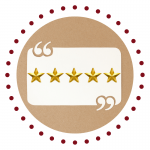
Like the Show? Please Leave a Review
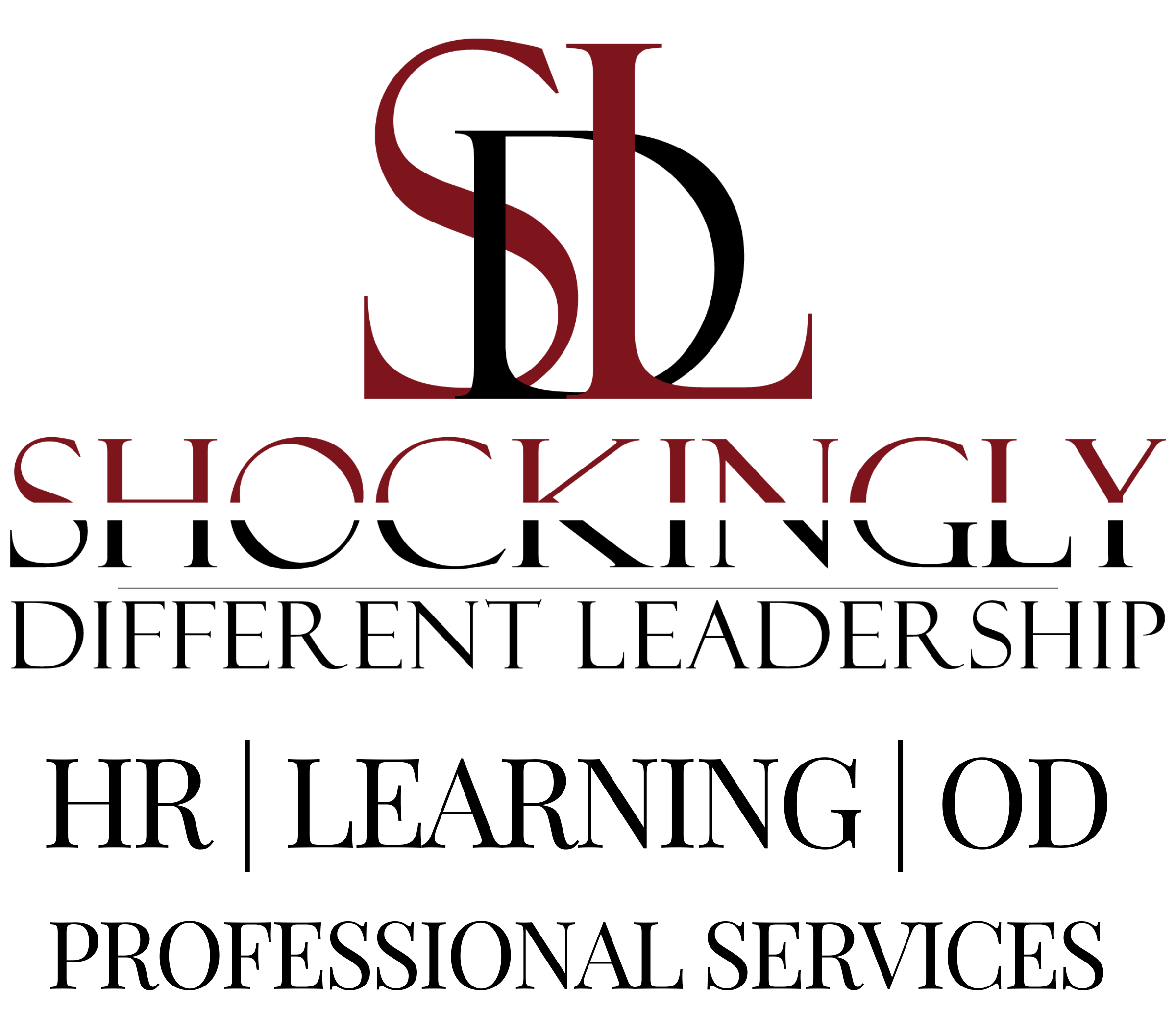
#KeepInTouch
via our podcast alerts
Subscribe now to discover why thousands of monthly listeners who are passionate about doing their best work prioritize time each week to listen to the Lead at the Top of Your Game podcast.
#AboutSDL
Shockingly Different Leadership is a human capital professional services consultancy that provides organizations access to the best consulting expertise in the areas of Talent Development, Organizational Development, and Human Resources – on an on-demand, project, or contract basis.
#WhereToFindUs
MAILING
4480-H South Cobb Drive
PMB 219
Smyrna, GA 30080
PHYSICAL
2121 NewMarket Parkway
Ste. 108
Marietta, GA 30067
#ContactOptions
Customer Service Email:
service@shockinglydifferent.com
Call or Text:
770-384-1103
#Office Hours
MON-FRI
8:30 AM – 6:30 PM
Weekends By Appointment

